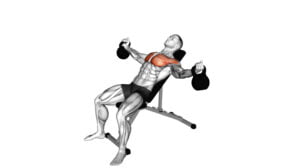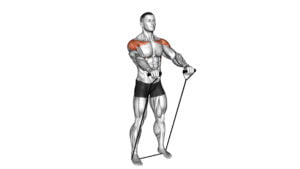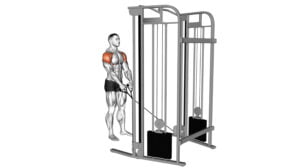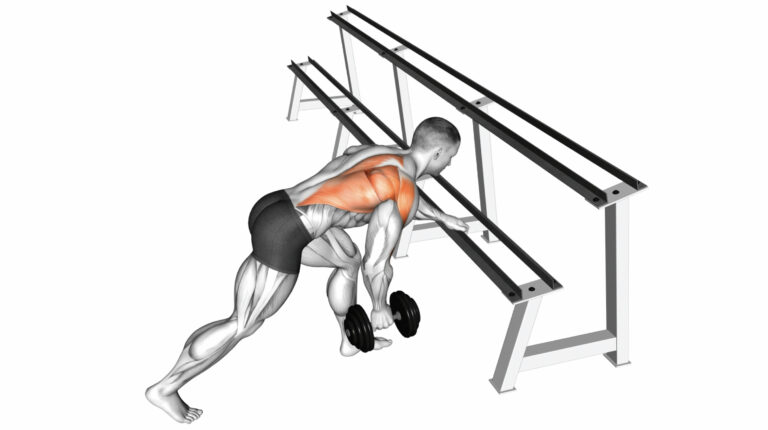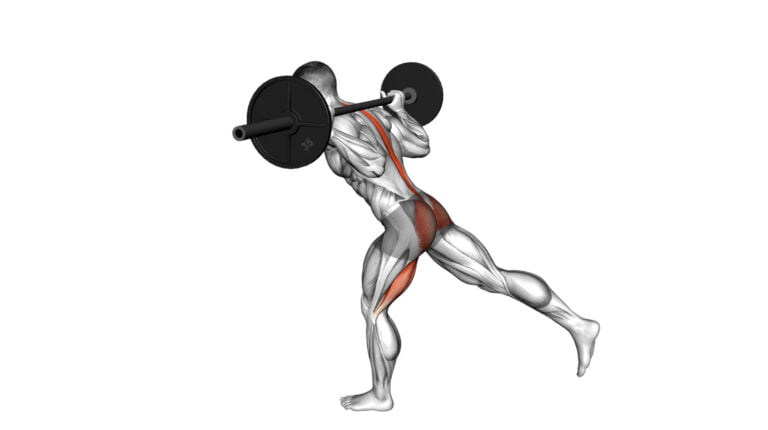10 Deltoid Anterior Exercises To Build Strong Shoulders And Boost Upper Body Strength
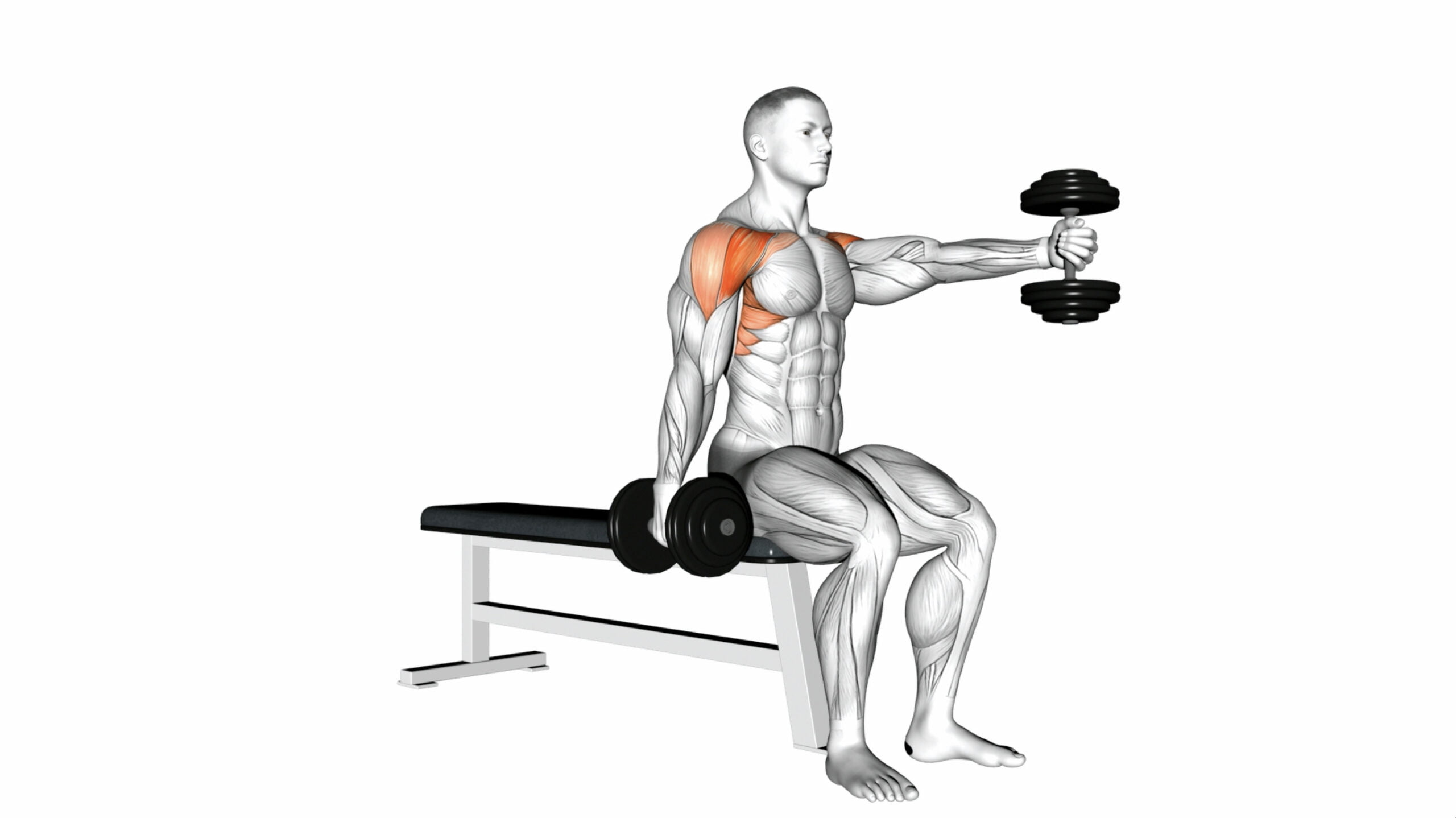
Building a formidable upper body doesn’t just boil down to pumping up the pecs and bulking out the biceps; it’s the shoulders that often hold the key to true functional strength. With over a decade as a Certified Strength and Conditioning Specialist (CSCS), I’ve seen firsthand how developing strong anterior deltoids can be transformative for athletes and fitness enthusiasts alike.
This underappreciated muscle group isn’t just critical for shoulder aesthetics—it plays a pivotal role in nearly every upper-body movement you perform.
Delving into our selection of 10 deltoid anterior exercises, you’ll discover techniques designed not just for size but also for enhancing stability and power across all your activities.
Studies show that incorporating specific movements targeting this area reduces shoulder injuries—an essential fact considering the prevalence of rotator cuff issues among active individuals.

Ready to elevate your training? Let these targeted workouts propel your progress forward!
Key Takeaways
- Strong anterior deltoids are crucial for everyday activities that involve pushing or lifting as well as improving shoulder aesthetics and preventing injuries.
- A mix of isolation exercises like dumbbell front raises and compound movements such as kettlebell one-arm snatches is effective for targeting the front delts from different angles.
- Proper form, technique, and gradual progression in weight and volume are key to safely strengthening the deltoid muscles while minimizing the risk of injury.
- Rest and recovery are just as important as active training for muscle repair, growth, and overall progress in building upper body strength.
- Consistency in performing these deltoid anterior exercises 2-3 times a week with recommended sets and reps will lead to significant improvements in shoulder stability and functionality.
Understanding the Deltoid Muscles
The deltoid muscles cap the shoulder joints, serving as powerful lifting and rotating forces for your arms. Shaped like inverted triangles, they are divided into three parts: anterior (front), lateral (middle), and posterior (rear).
The front delts initiate movements that raise your arms in front of you—a key action in many upper body exercises. They work closely with pec major and triceps to perform pressing motions such as push-ups or bench presses.
To keep those deltoids balanced and strong, it’s crucial to target each section correctly. Deltoid anterior exercises specifically focus on the front fibers, enhancing your ability to lift objects while preventing rotator cuff injuries.
Isolation exercise options like dumbbell front raises or cable lifts help hone in on these muscles. Meanwhile, compound exercises such as overhead presses involve them dynamically alongside other muscle groups.
These workouts promote muscular hypertrophy for broader shoulders and contribute significantly to overall upper body strength.

The Importance of Strong Anterior Deltoids
Having a grasp of the various deltoid muscles, it’s essential to focus on why the anterior (front) deltoids deserve attention. Strong anterior deltoids are vital for daily activities that involve pushing or lifting – think about opening heavy doors or picking up groceries.
These muscles work in unison with your chest and triceps to complete these motions smoothly and effectively.
Building up strength in your anterior deltoids can also enhance your overall shoulder aesthetics, providing a well-rounded and sculpted appearance. Moreover, robust delts support better posture by aligning your shoulders properly, which helps prevent common upper body injuries.
Deltoid Anterior Exercises contribute significantly to stabilizing the shoulder joint during dynamic movements, serving as a foundation for a sturdy and resilient upper body capable of tackling both athletic endeavors and life’s everyday challenges.
Top 10 Deltoid Anterior Exercises to Boost Upper Body Strength
Get ready to strengthen your shoulders and boost your upper body strength with these effective deltoid anterior exercises. Read on to discover the best exercises for building strong, powerful shoulders.
1. Dumbbell Front Raise
The dumbbell front raise is a simple yet effective exercise that targets the anterior deltoids, the muscles at the front of your shoulders. Start by standing tall with your feet shoulder-width apart.
Grip a pair of dumbbells in your hands with palms facing down and keep them slightly in front of your thighs. This will be your starting position.
Lift the weights upward, keeping arms straight but not locked, until they are parallel to the floor. Make sure you elevate through the strength of your shoulders rather than swinging or using momentum.
It’s essential to maintain control as you lower the dumbbells back to the starting position, being careful not to let gravity do all the work for you—this ensures that your deltoids are engaged throughout every part of this isolating movement.
Repeat this movement slowly and intentionally for repetitions that challenge but don’t compromise form, allowing these primary movers to lead while minimizing assistance from secondary muscle groups like biceps or back muscles.
2. Dumbbell Incline Front Raise
To perform a dumbbell incline front raise, sit on an incline bench with your back against the pad and hold a dumbbell in each hand. Start with your arms hanging down in front of you, palms facing each other.
Keeping a slight bend in your elbows, lift the dumbbells up to shoulder height while maintaining control. Lower the weights back down slowly to complete one rep.
This exercise specifically targets the anterior deltoids and helps to build shoulder strength and stability. It also engages the upper chest muscles as well as the trapezius, making it an effective compound movement for overall upper body development.
3. Dumbbell Incline Raise
Position yourself on an incline bench with a dumbbell in each hand, resting on your thighs. Using your thighs to help lift the dumbbells up, bring them to shoulder height. Maintain a slight bend in your elbows and lift the dumbbells outwards and upwards until they are at head level.
Engage your anterior deltoids as you raise the dumbbells, focusing on controlled movement throughout. Lower the weights back down slowly to complete one repetition. This exercise effectively targets and strengthens your anterior deltoid muscles, crucial for overall shoulder stability and functionality.
Moving onto our next exercise – Dumbbell Seated Alternate Front Raise..
4. Dumbbell Seated Alternate Front Raise
Sit on a bench with back support and hold a dumbbell in each hand, palms facing your body. Keep the weights close to your thighs. Exhale as you lift one dumbbell directly in front of you until it’s parallel to the ground.
Lower it back down and then raise the other dumbbell using the same motion. Repeat for the desired number of repetitions, keeping control throughout.
To execute this exercise correctly, engage your core for stability and avoid swinging or using momentum to lift the weights. This movement targets your anterior deltoids while also engaging stabilizing muscles in your shoulders and upper back.
5. Cable Front Raise
Hold a cable handle in each hand, standing with your feet shoulder-width apart and knees slightly bent. Engage your core and keep your back straight as you raise the handles in front of you to shoulder height.
Keep a slight bend in your elbows throughout the movement, then slowly lower the handles back down. This exercise effectively targets your anterior deltoids while also engaging other muscles in the shoulders for overall strength and stability.
To increase the challenge, gradually increase the weight on the cable machine or adjust the angle to target different parts of your deltoid muscles. Proper form is crucial for maximizing effectiveness and preventing injury while performing this exercise.
6. Cable Front Raise (rope attachment)
Attach a rope to the cable machine at the lowest setting. Stand facing away from the machine with your feet shoulder-width apart. Grasp the rope handles, keeping your palms facing each other.
Raise the rope up in front of you until your arms are parallel to the floor. Slowly lower them back down and repeat for desired reps.
Engage your anterior deltoids as you lift, maintaining control throughout the movement. Focus on breathing deeply throughout each rep and keeping your core engaged for stability. This exercise targets your front delts effectively while also engaging stabilizing muscles in the shoulders and upper back.
7. Cable Single Arm Neutral Grip Front Raise
To perform the Cable Single Arm Neutral Grip Front Raise, stand facing a cable machine with a D-handle attached to the low pulley. Grasp the handle with your palm facing inward and arm fully extended in front of you.
Keeping your core engaged and back straight, lift the handle directly in front of you until your arm is parallel to the ground. Lower it slowly and repeat on both arms to ensure balanced development of your anterior deltoids.
The Cable Single Arm Neutral Grip Front Raise effectively targets your anterior deltoids while also engaging stabilizer muscles for improved shoulder strength and stability. This exercise helps enhance shoulder mobility and contributes to a well-rounded upper body strength routine, preparing you for more complex movements such as overhead pressing or pulling exercises.
8. Kettlebell One Arm Snatch
Transitioning from the Cable Single Arm Neutral Grip Front Raise, the Kettlebell One Arm Snatch is a dynamic and powerful exercise that engages multiple muscle groups simultaneously.
Holding a kettlebell in one hand between your legs, you’ll explosively extend through the hips, using momentum to propel the kettlebell upwards. As it rises, keep it close to your body before locking out your elbow overhead in one swift motion.
This full-body movement not only targets your anterior deltoids but also engages your hips, core, and back muscles for an effective total-body workout.
9. Weighted Seated Plate Driver
Transitioning from the dynamic Kettlebell One Arm Snatch, the Weighted Seated Plate Driver with a plate targets your anterior deltoids while challenging your core stability. To perform this exercise, sit on a bench with your feet flat on the floor and hold a weight plate at chest level.
Push the plate forward explosively until your arms are fully extended in front of you, then slowly retract it back to the starting position.
This exercise engages not only your anterior deltoids but also recruits stabilizing muscles throughout your upper body and core, making it an excellent addition to any shoulder workout routine.
10. Weighted Full Can Exercise
Hold a weight plate in each hand with an overhand grip and your arms at your sides, standing with your feet hip-width apart. Slowly raise the plates out in front of you to shoulder height while keeping your arms straight.
Lower the weight back down to complete one repetition, then repeat for a full set.
Keep your core engaged and maintain a slight bend in your elbows throughout the movement to target and strengthen your anterior deltoids effectively. This exercise also engages other muscles like the trapezius and serratus anterior, making it a comprehensive upper body workout.
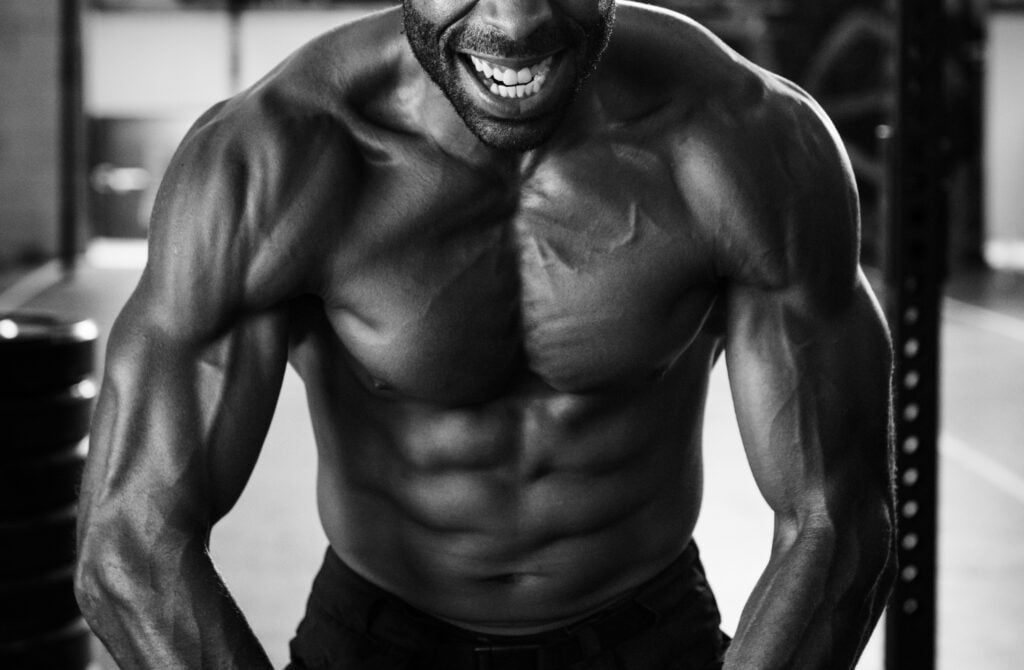
How to Incorporate These Deltoid Anterior Exercises into Your Workout Routine
When incorporating these deltoid anterior exercises into your workout routine, it’s important to choose the right exercises that target the front delts effectively. Focus on proper form and technique to maximize the benefits of each exercise, and gradually increase frequency and volume as you progress.
Remember to challenge yourself while also allowing for adequate rest and recovery in between sessions.
Choosing the right exercises
Selecting the appropriate exercises for your deltoid anterior muscles is crucial for a balanced and effective workout routine. Consider incorporating a variety of movements that target this muscle group from different angles, such as front raises with dumbbells or cables, to ensure comprehensive development.
It’s essential to choose exercises that align with your fitness goals and abilities while also challenging your anterior deltoids adequately. Focus on selecting movements that allow you to maintain proper form and technique throughout each repetition, promoting optimal muscle engagement without risking injury.
When determining the right exercises for your workouts, prioritize those that you can perform consistently with correct posture and technique. Additionally, consider integrating both compound movements like incline presses alongside isolation exercises such as cable front raises to comprehensively work the anterior deltoids while supporting overall shoulder strength and stability.

Proper form and technique
Maintaining proper form and technique during deltoid anterior exercises is crucial for preventing injury and maximizing the effectiveness of each movement. When performing dumbbell front raises, stand with feet shoulder-width apart, holding a dumbbell in each hand.
Keep your back straight and raise the weights directly in front of you to shoulder level, making sure to avoid swinging or using momentum. For cable front raises, attach a rope handle to a lower setting on the cable machine and stand facing away from it.
With arms extended straight down, lift the handles upward until they reach shoulder height while keeping core engaged.
During kettlebell one arm snatches, start with a single kettlebell between your feet and hinge at the hips to grasp it with one hand. Explosively extend through the legs as you swing the weight upward and transition under it as your arm straightens overhead when reaching full extension.
Frequency and volume
To optimize the development of your anterior deltoids, aim to perform these exercises 2-3 times a week. But remember not to overdo it – recovery is crucial for muscle growth and strength.
Start with 3 sets of 8-12 reps for each exercise, gradually increasing as you gain strength. It’s essential to listen to your body and adjust the volume based on your individual fitness level and recovery ability.
Consistency in incorporating these exercises into your weekly routine will help strengthen and build well-defined shoulders, enhancing overall upper body strength and stability. Once you have established a comfortable frequency and volume, focus on perfecting form and technique to ensure maximum benefits from each exercise.

Recommended Sets And Reps
Perform 3-4 sets of each exercise, aiming for 8-12 repetitions per set to effectively target and strengthen the anterior deltoids. Adjust the weight to ensure that the last few reps of each set are challenging but still maintain proper form.
Rest for 60-90 seconds between sets to allow for adequate recovery while maintaining intensity throughout your workout.
To progress, consider gradually increasing the weight or difficulty of the exercises as you build strength. Focus on consistent performance improvement by tracking your progress and pushing yourself to achieve higher reps or heavier weights over time.
Remember that proper rest and recovery are crucial in preventing injury and maximizing muscle growth.
Progressing and challenging yourself
Once you have established a solid foundation with the recommended sets and reps, it’s time to ramp up the challenge. Introduce progressive overload by increasing resistance or volume gradually.
Experiment with advanced variations of the anterior deltoid exercises such as incline front raises or single-arm kettlebell snatches to keep pushing your boundaries. Continuously strive for proper form and optimal range of motion while progressively challenging yourself to reach new heights in strength and endurance.
Always listen to your body, but don’t be afraid to step out of your comfort zone and test your limits.
With each workout, aim to elevate your performance incrementally. Set realistic yet ambitious goals, whether it’s lifting heavier weights or performing more repetitions with impeccable technique.

Importance of rest and recovery
Rest and recovery are crucial components of any workout routine. Adequate rest allows muscles to repair, rebuild, and grow stronger. When we exercise, our muscles undergo stress and small tears occur in the muscle fibers.
Rest gives the body time to repair these micro-tears, leading to muscle growth and increased strength over time. Additionally, proper rest can help prevent injury by allowing the body time to recover from intense workouts.
Understanding the importance of rest in between workouts is essential for overall fitness progress. Incorporating active recovery techniques such as low-impact activities or stretching into your routine can also aid in promoting better circulation and flexibility while reducing muscle soreness.
Conclusion

In conclusion, these 10 Deltoid Anterior Exercises offer a practical way to build strong shoulders and enhance upper body strength. Implementing these exercises can have a significant impact on your overall fitness goals.
Emphasizing proper technique and consistency will ensure efficient results. By incorporating these exercises into your workout routine, you can progress towards achieving your desired shoulder strength and muscle development.
Let’s take this opportunity to elevate our training and reach new levels of upper body strength!
FAQs
1. What are the best exercises for strengthening my anterior deltoid?
For a robust anterior deltoid, incorporate movements like shoulder press with an Olympic barbell, front raises using free weights, and incline bench press into your strength training routine.
2. How can I target my lateral and posterior deltoid?
Effectively engage your lateral deltoid through upright rows and lateral raises; while rear delt flys along with dumbbell bench presses will strengthen your posterior deltoids for balanced shoulder development.
3. Will these exercises also increase upper body strength?
Absolutely! These exercises not only sculpt strong delts but also enhance overall upper body might by engaging supporting muscles during abduction, adduction, and shoulder extension moves.
4. Are there any specific benefits to doing pushups for my shoulders?
Pushups masterfully work the entire upper body – flexors, chest dips, internal rotation of the humerus – all contributing to powerful shoulders blades and rotator cuff muscles alike.
5. Can I still build strong shoulders if I have a torn rotator cuff?
Proceed with caution: Lighter free weight activities emphasizing controlled movements may aid in recovery without aggravating a torn rotator cuff injury; however always consult a healthcare professional first.
6. Do I need special equipment to perform these shoulder exercises effectively?
A mix of dumbbells or kettlebells is often sufficient but incorporating some gym staples like an incline bench or smith machine elevates exercise variety for maximized gains in core strength and muscle conditioning.

Author
Years ago, the spark of my life’s passion ignited in my mind the moment I stepped into the local gym for the first time. The inaugural bead of perspiration, the initial endeavor, the very first surge of endorphins, and a sense of pride that washed over me post-workout marked the beginning of my deep-seated interest in strength sports, fitness, and sports nutrition. This very curiosity blossomed rapidly into a profound fascination, propelling me to earn a Master’s degree in Physical Education from the Academy of Physical Education in Krakow, followed by a Sports Manager diploma from the Jagiellonian University. My journey of growth led me to gain more specialized qualifications, such as being a certified personal trainer with a focus on sports dietetics, a lifeguard, and an instructor for wellness and corrective gymnastics. Theoretical knowledge paired seamlessly with practical experience, reinforcing my belief that the transformation of individuals under my guidance was also a reflection of my personal growth. This belief holds true even today. Each day, I strive to push the boundaries and explore new realms. These realms gently elevate me to greater heights. The unique combination of passion for my field and the continuous quest for growth fuels my drive to break new ground.





